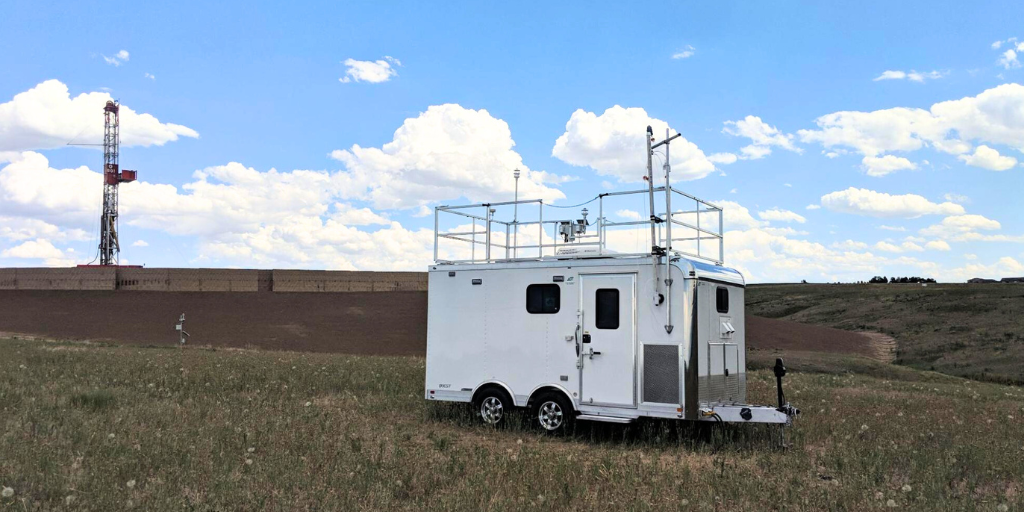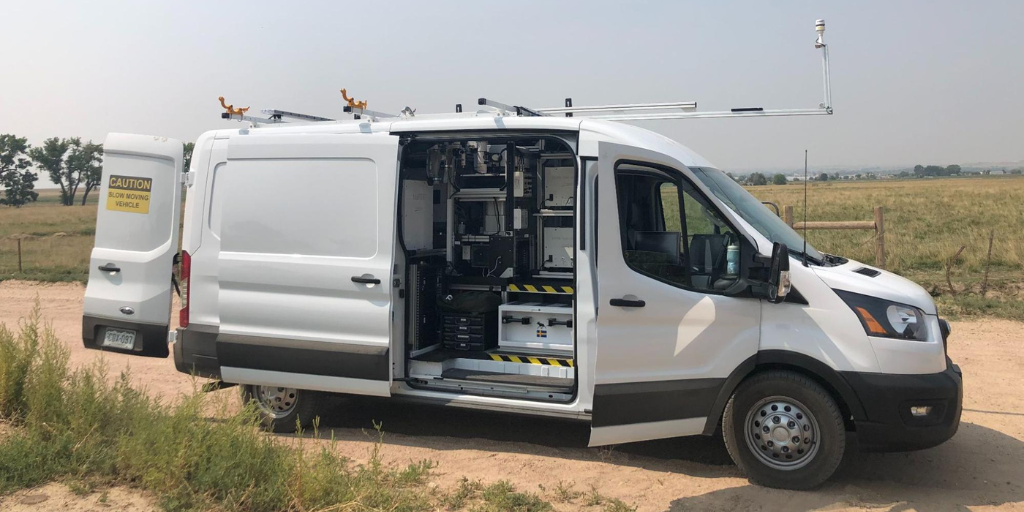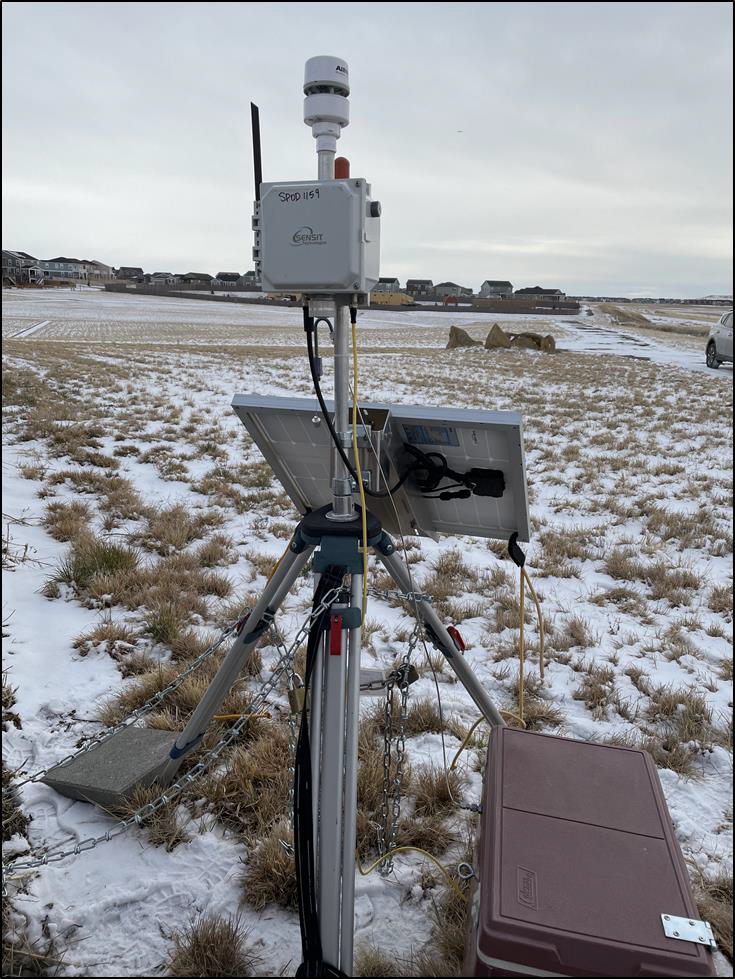Overview
Colorado operates three different mobile air monitoring tools and technologies to measure air quality across the state around oil and gas extraction and production sites. These tools collect data on air toxics and other pollutants to respond to community reported health concerns, investigate actual emissions compared to reported emissions, and hold air pollution sources accountable.
Deploying these tools and technologies is often prioritized in close collaboration with public concerns received by the Oil and Gas Health Information Response (OGHIR) Program. Ambient air quality measurements recorded by these mobile monitoring tools and technologies are then used to support the evaluation of potential community health risks using state and federal health guideline values.
The Colorado Air Monitoring Mobile Lab (CAMML)
The Colorado Air Monitoring Mobile Lab (CAMML) is a mobile air monitoring trailer equipped with scientific instruments for measuring speciated, or individual, volatile organic compounds (VOCs), particularly benzene due to the health implications associated with it. The CAMML can be configured to measure other pollutants such as nitrogen oxide (NO), nitrogen dioxide (NO2), methane, and particulate matter (PM10 and PM2.5) – along with meteorological parameters such as temperature, humidity, wind speed,and wind direction to help the health department identify potential emission sources.
The CAMML has significant power requirements to operate. It’s typically deployed for at least 4-6 weeks at a fixed location. The CAMML’s deployment schedule is directed by the overall sampling priorities of the Air Pollution Control Division.

Figure 1. Colorado Air Monitoring Mobile Lab trailer parked in rural Colorado with sampling intakes.
Meet the CAMML Data and reports
The Mobile Optical Oil and gas Sensor of Emissions (MOOSE)
The Mobile Optical Oil and gas Sensor of Emissions (MOOSE) is a van customized with cutting-edge scientific optical instrumentation to measure near real-time air pollution emissions while driving. The MOOSE can be deployed in communities near oil and gas activity to measure ambient concentrations of several VOCs including benzene, toluene, ethyl-benzene, and xylenes (BTEX), among others.
The MOOSE can also be deployed to measure emission rates of pollutants from a target facility. These measurements can help us better understand community exposure to air pollution and identify differences in actual emissions compared to permitted emissions.

Figure 2. The Mobile Optical Oil and gas Sensor of Emissions showcasing all the features used to monitor real-time air pollution emissions while driving.
Sensor pods (SPODs)
In order to assess the need for more detailed monitoring by the CAMML and MOOSE, the division uses Sensor Pod (SPOD) technology as screening tools. These air sensors measure total volatile organic compounds (VOCs) which can alert the division to increased VOC emissions activity. The sensor units are solar powered and low maintenance, so they can be deployed quickly. The sensors are attached to a meteorological station that can help identify potential emission sources based on wind patterns.
These instruments also have the ability to trigger a canister sample of air during a period of increased VOC activity. The sample can then be analyzed for various individual VOCs to identify the specific compounds in the air.

Figure 3. Sensor Pod on a tripod in a field near a residential area.